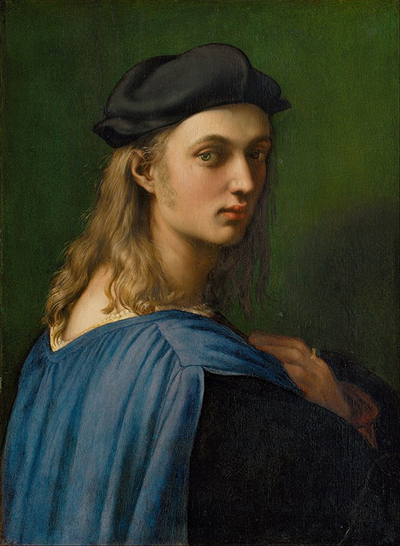 Buy Art Prints Now
Buy Art Prints Nowfrom Amazon
* As an Amazon Associate, and partner with Google Adsense and Ezoic, I earn from qualifying purchases.
The famous Portrait of Bindo Altoviti is a drawing completed around 1515 by the Italian famous High Renaissance painter Raphael. It is held in the National Gallery of Art in Washington, D.C.
Bindo Altoviti was a rich investor conceived in Rome in 1491 of the Florentine cause. He was a refined man who preferred human expressions. The simple, relatively feminine position of the subject alongside the overwhelming difference among light and shadow are atypical of Raphael's work, especially of his representations of men, showing the craftsman's experimentation with various styles and structures in his later Roman time. The impact of crafted by Leonardo, which Raphael considered cleverly amid this time of his profession, is strikingly apparent in this specific piece.
The work of art was a property of Altoviti's relatives until the point that 1808 when it was bought by Ludwig I of Bavaria. It stayed at the Alte Pinakothek until 1936, when, after numerous discussions about its attribution, the composition was baited out of Nazi Germany by "shrewd English dealers". Taken by Samuel Henry Kress, the drawing in this manner turned into the property of the National Gallery of Art in D.C in the United States. This capturing picture was thought in the nineteenth century to be a Raphael self-representation. However, we know today that this great looking young fellow was Bindo Altoviti, a well-off Florentine investor and companion of the craftsman in Rome.
He rotates in an emotional, relatively dramatic, approach to settling the eye of the watcher. Maybe one watcher specifically was intended to get his enthralling look: Bindo's better half Fiammetta Soderini. Renaissance writers and subjects were consistent in trusting that a man initially became hopelessly enamoured through the eyes. They were known as the "aides of affection," which could "uncover the energy inside more viable than the tongue itself, or letter, or ambassadors." Bindo's flushed cheeks add to the impression of enthusiasm, and a ring is noticeable on the hand he holds over his heart. The robe stretching from his shoulder uncovers an exposed scruff stroked by delicate twists. Their brilliant shading would have underscored the honorability and immaculateness of his affection.
Bindo and Fiammetta, a girl of a famous Florentine family, were hitched in 1511 when Bindo would have been around twenty. They went on to have six youngsters. However, Fiammetta kept on living in Florence while Bindo's business with the ecclesiastical court required his quality in Rome. This picture, which hung in the couple's residence in Florence, would have furnished Fiammetta with a distinctive notice of her missing spouse. It stayed in the Altoviti family for about three hundred years.
The drawing of Bindo Altoviti's notoriety has endured numerous primary blow. Some have announced the work excessively freezing and inadequate, making it impossible to coordinate Raphael's different magnum opuses, recommending that it has been misattributed. nineteenth-century faultfinder Morelli ventured to such an extreme as to ensnare Altoviti's ear in his examination, trusting its shape to be suspiciously unique of Raphael. Different commentators, notwithstanding, laud the representation for shading even Titian would envy. The lord of Bavaria paid a substantial cost for this scene in 1808. If it's sufficient for sovereignty, it's adequate for us.




